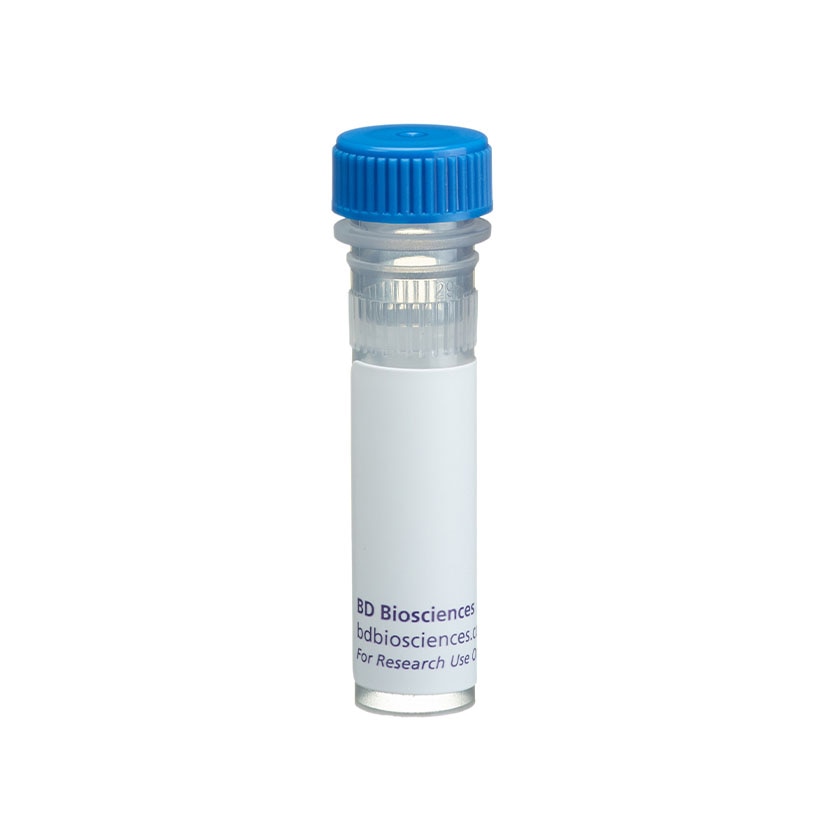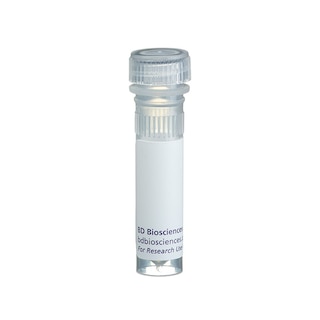Old Browser
This page has been recently translated and is available in French now.
Looks like you're visiting us from {countryName}.
Would you like to stay on the current country site or be switched to your country?





Western blot analysis of PP5 on a rat cerebrum lysate. Lane 1: 1:500, lane 2: 1:1000, lane 3: 1:2000 dilution of the mouse anti-PP5 antibody.

Immunofluorescence staining of MDCK cells (Canine kidney; ATCC CCL-34).


BD Transduction Laboratories™ Purified Mouse Anti-PP5

BD Transduction Laboratories™ Purified Mouse Anti-PP5

Regulatory Status Legend
Any use of products other than the permitted use without the express written authorization of Becton, Dickinson and Company is strictly prohibited.
Preparation And Storage
Recommended Assay Procedures
Western blot: Please refer to http://www.bdbiosciences.com/pharmingen/protocols/Western_Blotting.shtml
Product Notices
- Since applications vary, each investigator should titrate the reagent to obtain optimal results.
- Please refer to www.bdbiosciences.com/us/s/resources for technical protocols.
- Caution: Sodium azide yields highly toxic hydrazoic acid under acidic conditions. Dilute azide compounds in running water before discarding to avoid accumulation of potentially explosive deposits in plumbing.
- Source of all serum proteins is from USDA inspected abattoirs located in the United States.
Companion Products


.png?imwidth=320)
Phosphorylation and dephosphorylation on serine and threonine residues is critical for signal transduction and the regulation of numerous cellular functions. Phosphorylation levels are modulated by protein kinases and phosphatases. The Ser/Thr phosphatase PP5 (also known as PPT) is a model protein of the fourth subfamily of the PPP-family of phosphatases which includes PP1, PP2A, and PP2B. PP5 is primarily located in the nucleus, demonstrates widespread tissue distribution, and is highly conserved among species. It consists of a C-terminal catalytic domain and an N-terminal TPR (tetratricopeptide repeat) domain which is involved in protein-protein interactions. The TPRs of PP5 mediate protein phosphatase activity. TPRs mediate the interaction of PP5 with various proteins including the hsp90-glucocorticoid receptor complex and the kinase domain of ANP-guanylate cyclase receptor. PP5 is thought to be important in cell growth. For example, it functions upstream of p53 to regulate p21/WAF1/Cip1-mediated G1 growth arrest. Thus, PP5 is a nuclear protein phosphatase that is involved in signaling pathways of cell growth and arrest.
This antibody is routinely tested by western blot analysis. Other applications were tested at BD Biosciences Pharmingen during antibody development only or reported in the literature.
Development References (5)
-
Becker W, Kentrup H, Klumpp S, Schultz JE, Joost HG. Molecular cloning of a protein serine/threonine phosphatase containing a putative regulatory tetratricopeptide repeat domain. J Biol Chem. 1994; 269(36):22586-225920. (Biology). View Reference
-
Chen MX, McPartlin AE, Brown L, Chen YH, Barker HM, Cohen PT. A novel human protein serine/threonine phosphatase, which possesses four tetratricopeptide repeat motifs and localizes to the nucleus. EMBO J. 1994; 13(18):4278-4290. (Biology). View Reference
-
Das AK, Cohen PW, Barford D. The structure of the tetratricopeptide repeats of protein phosphatase 5: implications for TPR-mediated protein-protein interactions. EMBO J. 1998; 17(5):1192-1199. (Biology). View Reference
-
Ollendorff V, Donoghue DJ. The serine/threonine phosphatase PP5 interacts with CDC16 and CDC27, two tetratricopeptide repeat-containing subunits of the anaphase-promoting complex. J Biol Chem. 1997; 272(51):32011-32018. (Biology). View Reference
-
Zuo Z, Dean NM, Honkanen RE. Serine/threonine protein phosphatase type 5 acts upstream of p53 to regulate the induction of p21(WAF1/Cip1) and mediate growth arrest. J Biol Chem. 1998; 273(20):12250-12258. (Biology). View Reference
Please refer to Support Documents for Quality Certificates
Global - Refer to manufacturer's instructions for use and related User Manuals and Technical data sheets before using this products as described
Comparisons, where applicable, are made against older BD Technology, manual methods or are general performance claims. Comparisons are not made against non-BD technologies, unless otherwise noted.
For Research Use Only. Not for use in diagnostic or therapeutic procedures.
Report a Site Issue
This form is intended to help us improve our website experience. For other support, please visit our Contact Us page.